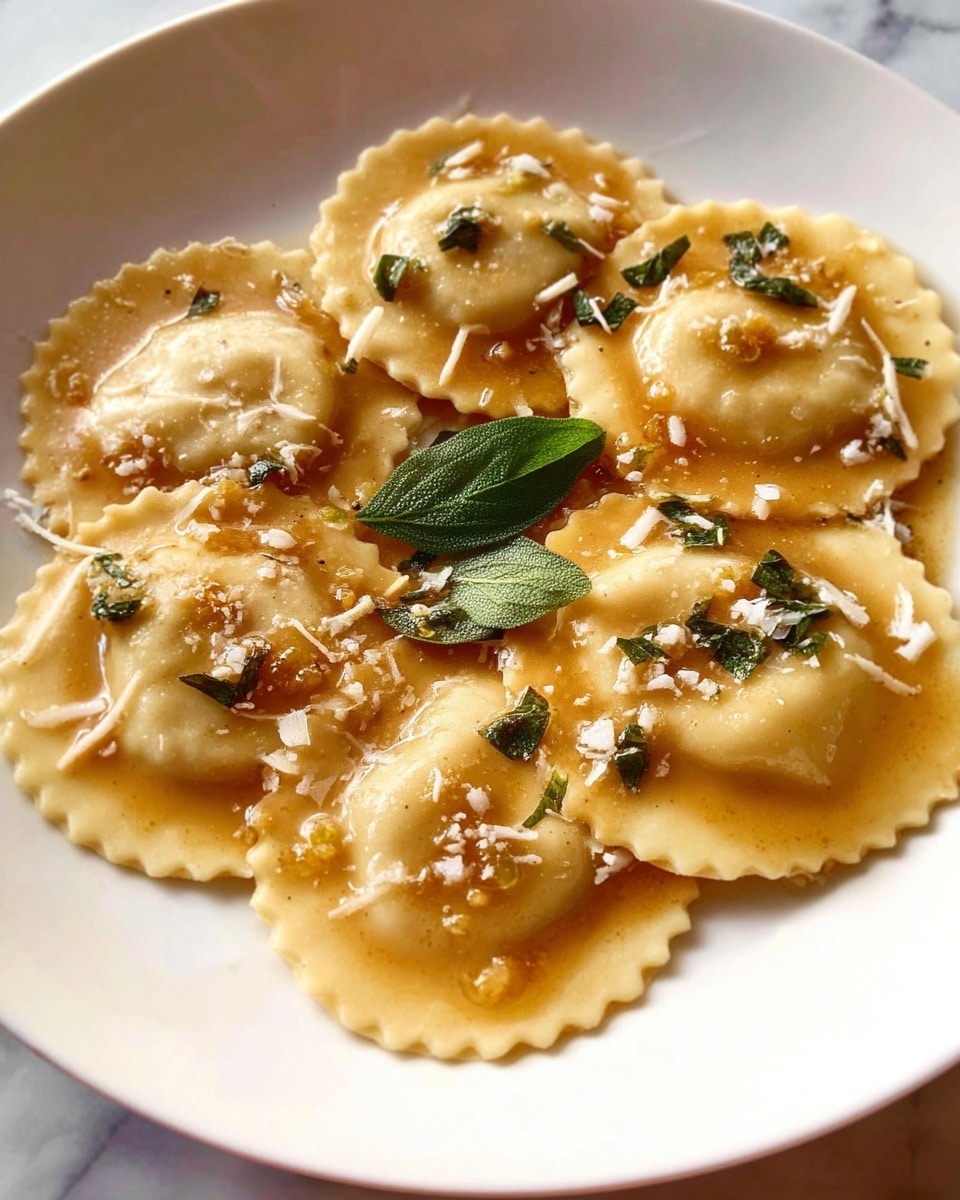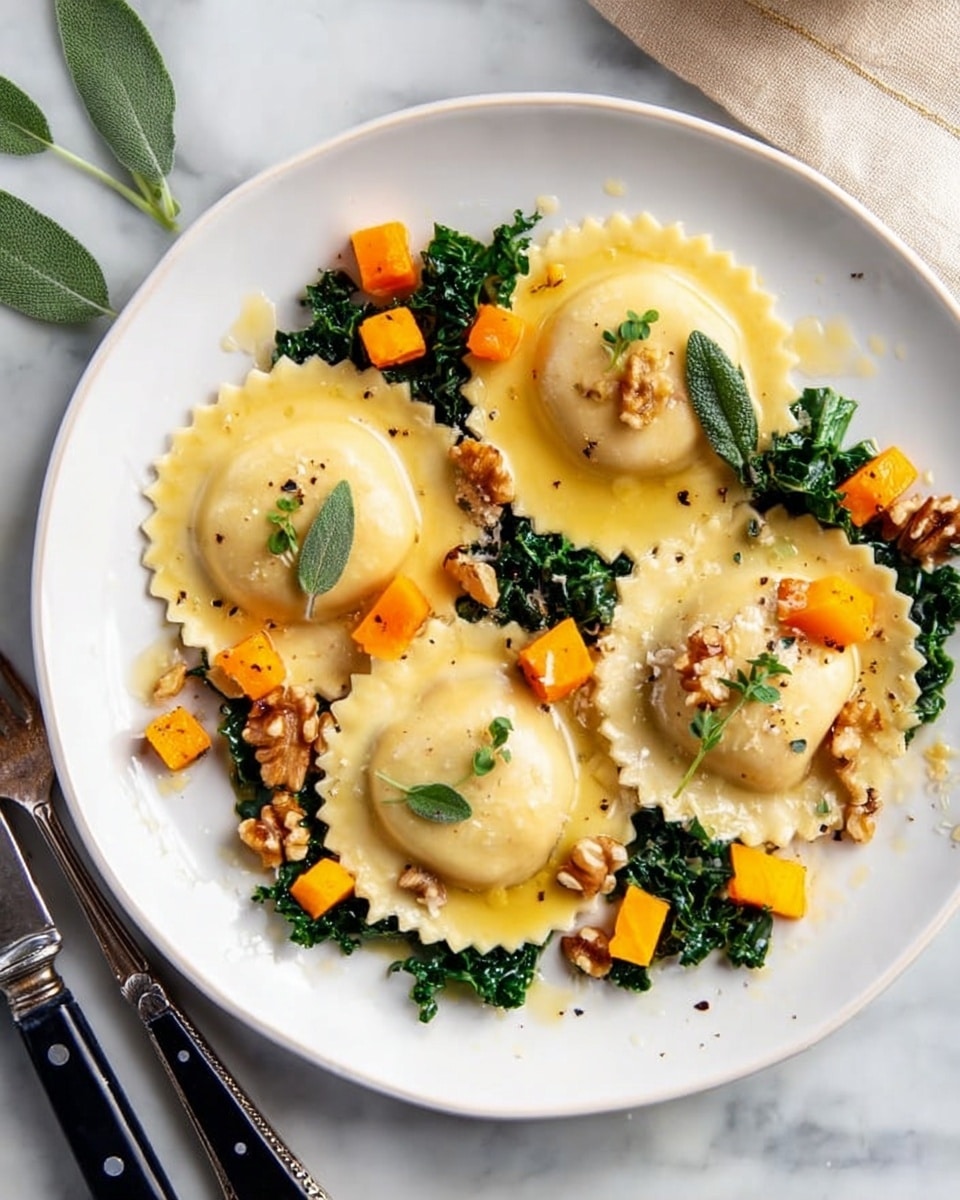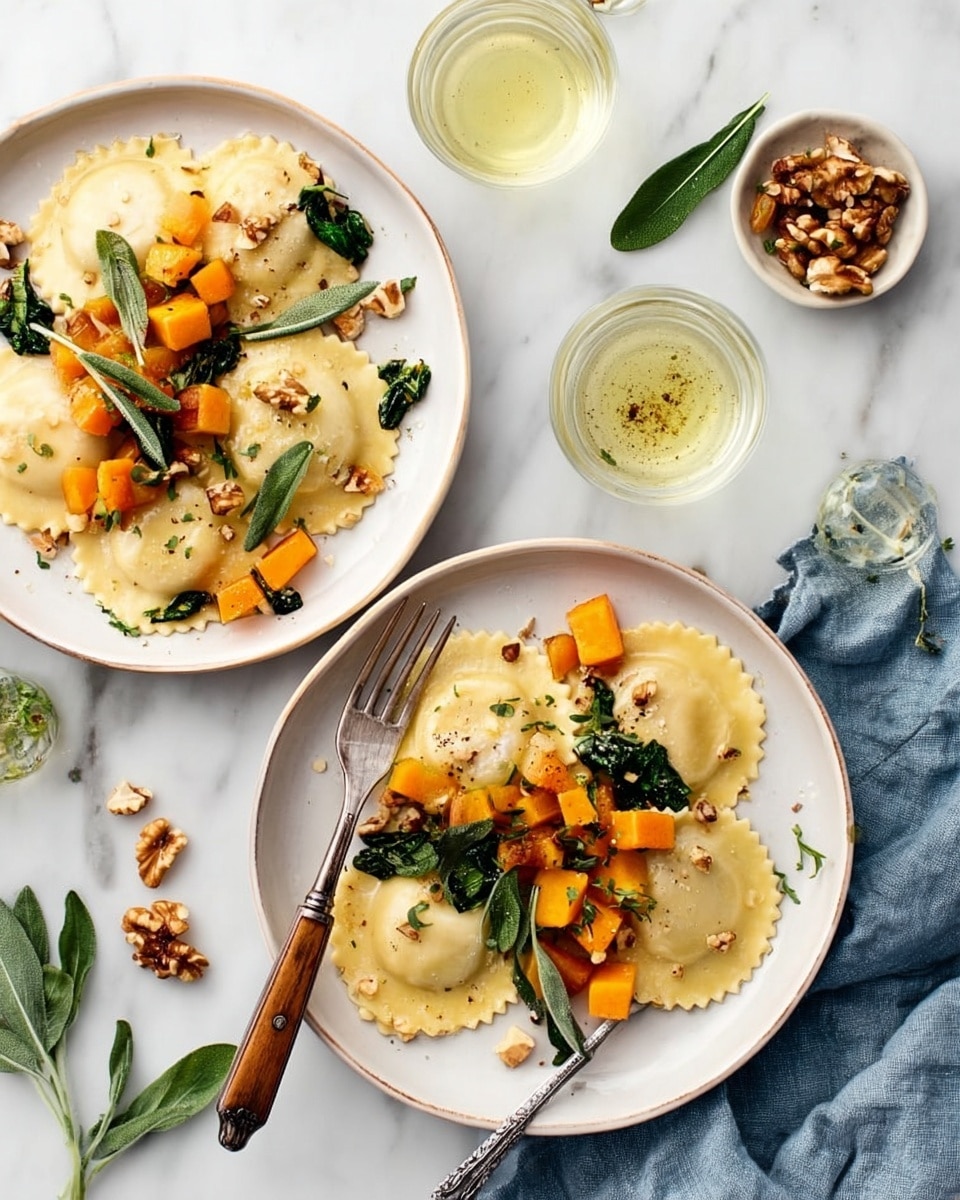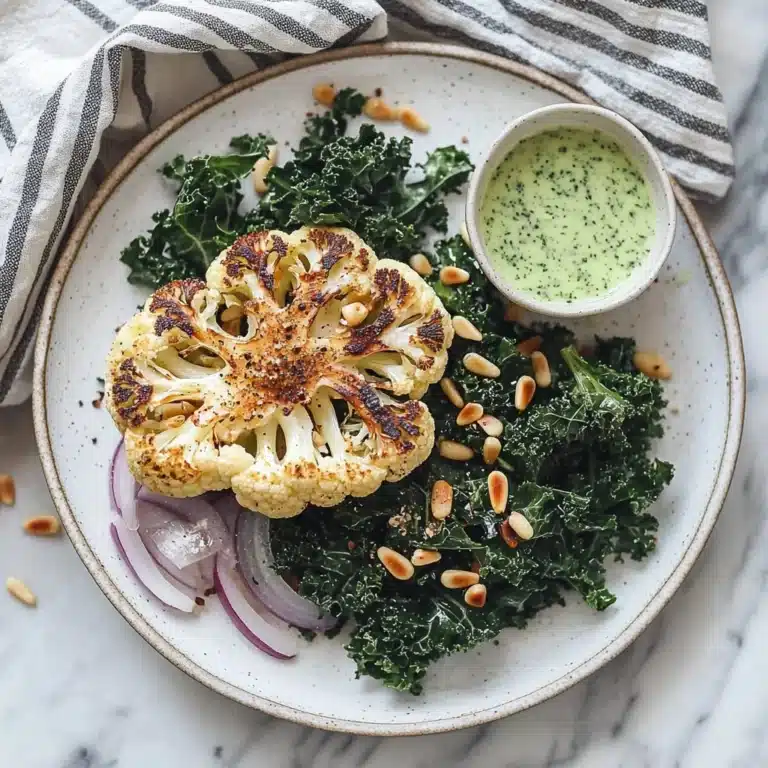
I absolutely love making this Butternut Squash Ravioli with Sage and Walnut Sauce Recipe because it feels like a cozy hug on a plate. The slight sweetness of roasted butternut squash combined with the earthy sage and crunchy walnuts creates such a balanced and comforting flavor that feels perfect for fall or a fancy weekend dinner. When I first tried this recipe, I was amazed at how approachable it is despite looking so elegant—and I know you’ll enjoy the sense of accomplishment from making your own ravioli from scratch.
This Butternut Squash Ravioli with Sage and Walnut Sauce Recipe is also super versatile. Whether you want to impress guests or just indulge yourself on a quiet evening, it works beautifully. Plus, it’s a great way to enjoy seasonal produce in a fresh, creative way. I’ll walk you through my personal tips and tricks so you can avoid the newbie mistakes I made, ensuring your ravioli turns out tender, flavorful, and perfectly sauced every single time.
Why You’ll Love This Recipe
- Deliciously Balanced Flavors: The sweetness of the squash perfectly matches the earthy sage and crunchy walnuts for a standout dish.
- Homemade Pasta Magic: Making your own ravioli dough might seem intimidating, but it’s doable and incredibly rewarding.
- Seasonal & Fresh Ingredients: You get to enjoy the best of fall produce with simple, fresh components that shine through.
- Impress Without Stress: Despite looking gourmet, this recipe is straightforward enough for a weeknight meal with a little prep.
Ingredients You’ll Need
Each ingredient in this Butternut Squash Ravioli with Sage and Walnut Sauce Recipe brings its own flavor and texture, working together to create a dish that’s rich, smooth, and crunchy all at once. I always recommend using fresh sage and good-quality olive oil to really make those flavors pop.
- Butternut Squash: Choose a small one with firm skin and no soft spots for roasting.
- Extra-virgin Olive Oil: Use a fruity oil you enjoy since it flavors both the filling and sauce.
- Shallot: Adds a subtle sweetness that complements the squash without overpowering it.
- Garlic: Fresh cloves bring essential aroma—roast alongside the shallots and sage for mellow flavor.
- Fresh Sage Leaves: Absolutely use fresh, not dried, for that unmistakable earthy-herbal note.
- Homemade Pasta Dough: If you’re new, just follow the linked pasta recipe carefully—I promise it’s less scary than it sounds.
- Walnuts: Toast and chop finely to bring a wonderful crunch and nutty depth.
- Apple Cider Vinegar: A little acidity brightens the filling and balances the sweetness.
- Nutmeg: A pinch adds warmth without being overpowering.
- Sea Salt & Black Pepper: Essential for seasoning every component properly.
- Dry White Wine: Adds complexity to the sage sauce—choose something you’d drink!
- Fresh Thyme: Adds a subtle layer of fresh herbal flavors in the sauce.
- Optional Garnishes: Roasted butternut squash cubes, sautéed kale, grated pecorino cheese—each adds extra texture and flavor.
Variations
I love playing around with this Butternut Squash Ravioli with Sage and Walnut Sauce Recipe, depending on seasons or what I have in the fridge. Feel free to swap ingredients or tweak the sauce to match your mood—you’ll find it’s a fantastic base recipe to make your own.
- Vegan Version: Skip the pecorino cheese and make sure your pasta dough uses water or a plant-based egg substitute.
- Spicy Kick: Add a pinch of red pepper flakes to the walnut sauce for a gentle heat that livens things up.
- Alternative Nuts: Try toasted pecans or hazelnuts if walnuts aren’t your thing—I’ve done this and love the twist.
- Different Herbs: Swap sage with fresh rosemary or thyme in the filling and sauce for a new flavor profile.
How to Make Butternut Squash Ravioli with Sage and Walnut Sauce Recipe
Step 1: Roast the Butternut Squash and Aromatics
Start by preheating your oven to 400°F—it’s perfect to get that nice caramelization on the squash. Cut the squash in half lengthwise, scoop out the seeds, drizzle with olive oil, and sprinkle with salt and pepper. Place the halves cut side down on a lined baking sheet and prick the skin with a fork a few times so steam escapes. For those wonderful roasted flavors, wrap shallots, garlic cloves, and fresh sage leaves in foil with a drizzle of olive oil and salt, and pop them in the oven for about 20 minutes. Giving everything about 40 minutes for the squash and 20 for the herbs and aromatics really brings out their sweetness and depth. Let them cool at least half an hour before handling—it’s worth the wait!
Step 2: Prepare the Pasta Dough and Roll It Out
If you’re making homemade pasta, follow your trusted recipe for the dough (I’ve linked a great one below). Once done, wrap it tightly in plastic and let it rest for about 30 minutes—this rest makes rolling much easier. After resting, roll out the dough thinly into sheets; you’ll want them just thick enough to hold the filling without breaking but still tender after cooking. Lightly flour your surface and keep the sheets separated to avoid sticking.
Step 3: Make the Filling
While the dough rests, pulse the toasted walnuts until finely ground but not pasty to keep a nice texture. Add the cooled roasted shallot, garlic, sage, and about 1½ cups of roasted butternut squash to your food processor with vinegar, nutmeg, salt, and pepper. Pulse everything until smooth and creamy. I like chilling the filling in the fridge while I prep the pasta to help it firm up slightly—it makes filling the ravioli much tidier.
Step 4: Assemble the Ravioli
Lay out four sheets of pasta on a floured surface. Using a small cookie scoop or spoon, dollop the filling evenly spaced on two of the sheets. Then carefully cover each dotted sheet with the remaining sheets. Press gently around the filling mounds to seal out any air pockets. Using a ravioli stamp or sharp cutter, cut out individual ravioli. Don’t worry if a few edges aren’t perfectly sealed—just press down again to secure. This part takes practice, but you’ll get the hang of it quickly!
Step 5: Cook the Ravioli and Make the Sauce
Bring a large pot of salted water to a boil and gently drop the ravioli in—don’t overcrowd the pot, or they might stick. Cook for about 4 minutes, until they float to the surface and are tender but still hold their shape. Meanwhile, heat olive oil in a skillet over medium heat. Add sliced garlic and fresh sage, cooking gently for about 3 minutes until fragrant but not browned. Pour in the white wine, add thyme and salt, and simmer for another 2 minutes to blend the flavors perfectly.
Step 6: Plate and Garnish
Use a slotted spoon to transfer the ravioli directly into the skillet with the sauce, tossing gently to coat. Plate them with some sauce spooned over the top and finish by sprinkling with chopped walnuts, freshly ground black pepper, and, if you like, roasted butternut cubes, sautéed kale, and grated pecorino cheese. My family goes crazy for this finish—it adds texture and bursts of flavor that elevate the dish from great to unforgettable.
Pro Tips for Making Butternut Squash Ravioli with Sage and Walnut Sauce Recipe
- Roast Slowly for Sweetness: Don’t rush the roasting step—low and slow coax out the natural sugars in the squash and shallots.
- Dry Your Pasta Sheets Well: I found lightly dusting flour between pasta sheets prevents sticking and helps the ravioli seal nicer.
- Chill the Filling: Keeping the filling cold while assembling keeps it firm and easier to portion.
- Don’t Overfill Ravioli: Too much filling can cause them to burst in the water—less is more for neat, tasty pockets.
How to Serve Butternut Squash Ravioli with Sage and Walnut Sauce Recipe

Garnishes
I love topping this dish with a handful of toasted walnuts for crunch and some freshly grated pecorino cheese for saltiness and richness. A few extra sage leaves fried until crisp add the perfect herbal crunch that makes every bite interesting. Sometimes, I even sprinkle a touch of freshly ground black pepper right before serving—it wakes everything up.
Side Dishes
To keep things balanced, I often pair this ravioli with a simple sautéed kale or spinach dressed lightly with lemon. A crisp green salad with a tangy vinaigrette also cuts through the richness beautifully. For a heartier meal, toasted rustic bread makes perfect sopping companions to the sauce.
Creative Ways to Present
For special occasions, I’ve plated the ravioli in shallow bowls with the sauce artfully drizzled, then topped with microgreens or edible flowers for a pop of color. You can also arrange the ravioli in a circular pattern and sprinkle walnuts and herbs artistically for a restaurant-inspired look that’s sure to impress.
Make Ahead and Storage
Storing Leftovers
I like to store leftover ravioli in an airtight container with a light drizzle of olive oil to prevent sticking. They’ll keep well in the fridge for up to two days, though they’re best eaten fresh or the next day for optimal texture.
Freezing
You can freeze uncooked ravioli on parchment-lined trays, spaced apart so they don’t stick together. Once frozen solid, transfer them to a freezer bag. This trick has saved me so many times when I want to prep in advance—they freeze beautifully for up to 3 months.
Reheating
Reheat leftover cooked ravioli gently in simmering salted water for a couple of minutes until warmed through or reheat in a skillet with a splash of olive oil and sauce. Avoid microwaving if possible to keep the pasta from becoming gummy.
FAQs
-
Can I use store-bought pasta instead of homemade?
Absolutely! While homemade pasta gives that extra fresh texture, you can use fresh store-bought ravioli and simply fill them with the buttery butternut squash sauce. If you want the full homemade experience, though, rolling your own dough isn’t as hard as it seems—I promise.
-
What’s the best way to prevent ravioli from sticking?
Dusting your work surface and pasta sheets generously with flour and working quickly when assembling helps a lot. Also, place them on a floured tray or parchment paper rather than stacking. Adding a tiny bit of olive oil as well can keep them from sticking during storage.
-
Can I prepare the filling ahead of time?
Yes! The filling actually tastes better after resting as the flavors meld. Make it up to two days in advance and keep tightly covered in the fridge until ready to use.
-
Is there a substitute for walnuts in the sauce?
You can substitute toasted pecans or hazelnuts if you prefer. They maintain that lovely crunch and nutty flavor that balances the squash perfectly.
Final Thoughts
This Butternut Squash Ravioli with Sage and Walnut Sauce Recipe has become one of my go-to dishes when I want something special but doable. It’s one of those recipes where the rustic homemade touch shines through and makes your kitchen smell incredible. I encourage you to try it for your next cozy night in or a dinner party—you’ll be amazed at how satisfying and impressive it feels to pull off these delicate ravioli filled with fall flavors. Trust me, once you make this recipe, it’ll hold a permanent spot in your recipe box just like it did in mine!
Print
Butternut Squash Ravioli with Sage and Walnut Sauce Recipe
- Prep Time: 1 hour
- Cook Time: 1 hour
- Total Time: 2 hours
- Yield: 4 servings
- Category: Main Course
- Method: Baking
- Cuisine: Italian
Description
This homemade Butternut Squash Ravioli recipe features tender pasta filled with a creamy, nutty butternut squash mixture enhanced by sage, garlic, and walnuts. Served with a fragrant garlic and sage white wine sauce, and optional toppings like roasted squash cubes, sautéed kale, and pecorino cheese, this comforting dish is perfect for a cozy fall dinner.
Ingredients
For the Ravioli
- 1 small butternut squash
- Extra-virgin olive oil, for drizzling
- 1 medium shallot, roughly chopped (scant 1/2 cup)
- 3 garlic cloves, peeled
- 1/4 cup loose-packed fresh sage leaves
- 1 recipe Homemade Pasta dough
- 1/3 cup chopped walnuts
- 1 teaspoon apple cider vinegar
- Pinch nutmeg
- 3/4 teaspoon sea salt, plus more for sprinkling
- Freshly ground black pepper
For Serving
- 2 tablespoons extra-virgin olive oil
- 2 garlic cloves, thinly sliced
- 10 fresh sage leaves
- 2 tablespoons dry white wine
- 1 teaspoon fresh thyme leaves
- 1/4 teaspoon sea salt
- 1/4 cup chopped walnuts
- Freshly ground black pepper
- 1 cup roasted butternut squash cubes (optional)
- 1/2 bunch sautéed kale (optional)
- Grated pecorino cheese (optional)
Instructions
- Preheat and prepare squash: Preheat the oven to 400°F and line a baking sheet with parchment paper. Cut the butternut squash in half vertically, scoop out seeds, drizzle with olive oil, sprinkle with salt and pepper, and place cut side down on the baking sheet. Prick the skin several times with a fork and roast for 40 minutes.
- Roast shallot, garlic, and sage: Wrap the shallot, garlic cloves, and sage leaves in foil with a drizzle of olive oil and a pinch of salt. Place in the oven and roast for 20 minutes alongside the squash. After roasting, allow squash, shallots, garlic, and sage to cool for at least 30 minutes.
- Prepare pasta dough: Make the homemade pasta dough according to your preferred recipe. Wrap the dough ball in plastic wrap and let it rest while making the filling.
- Make the filling: Pulse walnuts in a food processor until finely ground. Add roasted shallot, garlic, and sage. Scoop 1½ packed cups of roasted squash into the processor along with apple cider vinegar, nutmeg, sea salt, and freshly ground black pepper. Pulse until smooth. Chill the filling until ready to use.
- Roll and fill pasta sheets: Roll out pasta sheets according to your recipe instructions, stopping before cutting into strands. Lay 4 sheets on a floured work surface. Use a 1-tablespoon cookie scoop to portion filling onto 2 sheets, spacing depending on ravioli size. Cover with remaining sheets, gently press around filling to seal, and use a ravioli stamp or cutter to cut shapes.
- Cook ravioli: Bring a pot of salted water to a boil. Drop ravioli into boiling water and cook for 4 minutes until tender. Drain carefully.
- Prepare sauce: Heat olive oil in a medium skillet over medium heat. Add sliced garlic and sage leaves and cook for 3 minutes until fragrant. Stir in dry white wine, fresh thyme leaves, and sea salt. Cook, stirring occasionally, for 2 minutes to reduce slightly.
- Serve: Spoon the sauce over cooked ravioli. Top with chopped walnuts and freshly ground black pepper. Optionally add roasted butternut squash cubes, sautéed kale, and grated pecorino cheese. Serve warm.
Notes
- Use a ravioli stamp or cutter to achieve uniform shapes and better seals.
- Let the roasted ingredients cool thoroughly to avoid melting the pasta dough while assembling.
- You can substitute pecorino cheese with Parmesan or a vegan cheese alternative if preferred.
- Roasting the squash with the skin on makes it easier to scoop out the flesh and adds depth of flavor.
- Keep work surfaces and pasta well floured to prevent sticking during rolling and shaping.
Nutrition
- Serving Size: 1 serving (about 6 ravioli)
- Calories: 420
- Sugar: 5g
- Sodium: 400mg
- Fat: 18g
- Saturated Fat: 3g
- Unsaturated Fat: 13g
- Trans Fat: 0g
- Carbohydrates: 50g
- Fiber: 6g
- Protein: 10g
- Cholesterol: 15mg








